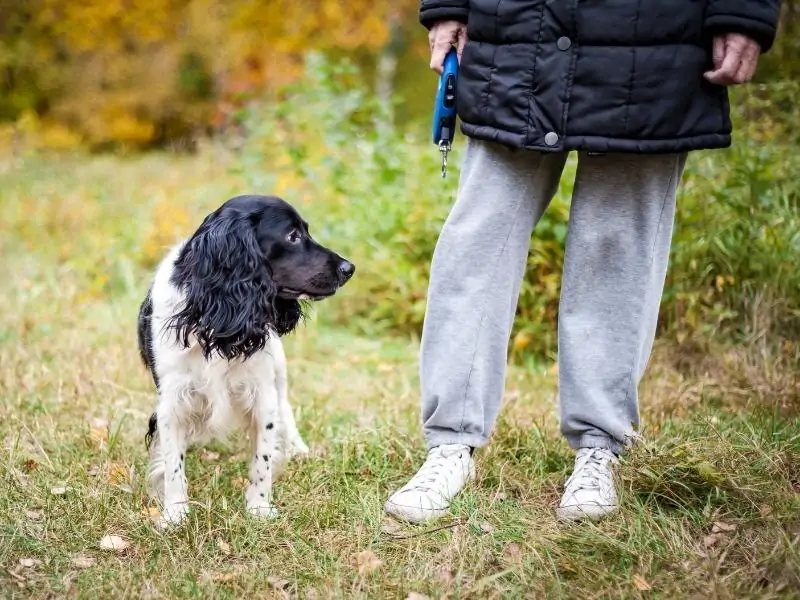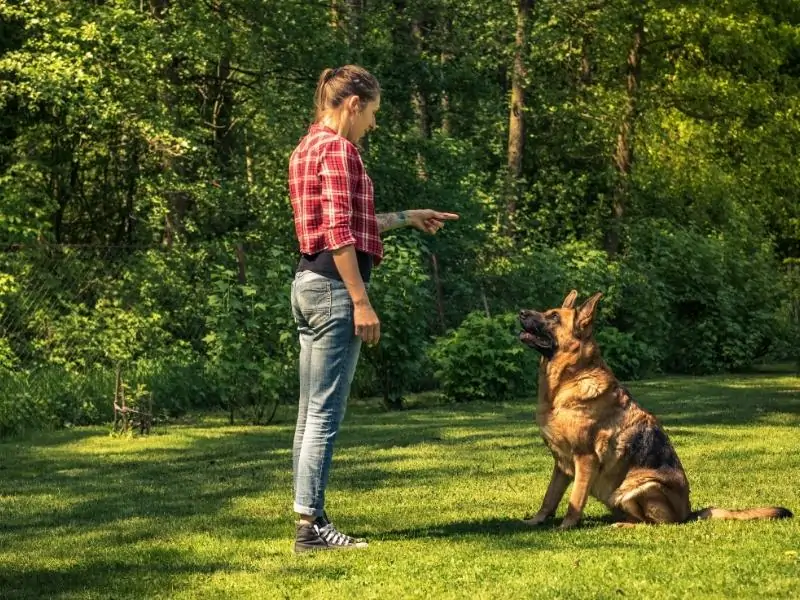All dogs should start learning basic obedience commands from a young age. Training dogs’ commands in foreign languages are increasingly popular among dog owners. If you want to keep the training interesting and mentally stimulating for your pet, try training them in basic Russian commands.
So, how do you say sit in Russian to a dog? The Russian word for sit is сидеть (Sidet) which is pronounced see-DET’. This is a basic dog command and one of the first things most owners try to teach their dogs. Sit is one of the most confusing commands when taught in English, but “Sidet” is easily distinguishable.
Teaching dog commands in Russian can be a great way to spice up your puppy’s training! But this is also the most effective way to prevent anyone else from issuing commands to your dog.
Read on for a complete Russian commands list!
Why Is It Important to Teach Dogs Basic Russian Commands?
It’s not uncommon for working dogs that are trained for professional purposes like search and rescue, and support dogs to be taught commands in languages other than English.
Russian and German are the two most popular languages used for training these dogs. Russian in particular is becoming more and more popular among regular owners and trainers of non-working dogs.
Since Russian is rarely spoken anywhere outside Russia, Russian dog commands are unlikely to be used in daily conversations.
Learning a new language like Russian, can be fun and challenging for both the owner and the dog. This entertaining experience will mentally stimulate your pooch and also help strengthen your bond.
Why Russian Commands?
There are several reasons why you would wish to teach your dog Russian commands. The most important one is to prevent strangers from issuing commands to your dog without your permission.
For example, you can use English for all basic dog commands, but teach your dog a Russian word for an attack as a security precaution.
Please know that dogs don’t understand languages the way we do. They, however, understand words or sounds to be precise (source).
Besides German, Spanish, and French, many owners and trainers like using common Russian commands. This language sounds a bit exotic, and it’s not easy to converse in without some prior exercise.
What Are the Primary Russian Dog Commands?

Obedience commands are an important aspect of dog training, so start training your puppy as soon as you bring them home. Russian dog commands are usually short and quite easy to remember.
Before you start training make sure you can pronounce these commands correctly to avoid confusing your dog. Without further ado, here’s the list of primary Russian dog commands:
1. Attack, Bite – Fas (Фас)
Training your dog to attack using the Russian command “fas” (фас) can be extremely handy. This way, no one other than you can order your dog to bite, or attack someone.
2. Beg – Prosi (Проси)
Think of begging as a cute trick, more than an actual dog command. This is a relatively easy trick to train a dog using patience and positive reinforcement training.
3. Bark – Golos (Гoлoс)
Most owners train their dogs to stop barking, but teaching your dog to bark on command can be useful in some cases. In fact, training your dog to be quiet is much easier once they know to bark on cue.
4. Sit – Sidet (Cидеть)
Sit is a basic command and one of the first commands you are going to teach to your dog. However, sit is a simple, one-syllable word that isn’t as distinguishable as “sidet” in Russian.
5. Come – Ko Mne (Ko Mне)
Come is another important basic command that is often used. Teaching the “ko mne” command can prevent your dog from being confused in a dog park when other owners start calling their dogs to come.
6. Lie Down – Lezhat (Лежать)
The Russian command “lezhat” is sharper and clearer than “lie down”, but it’s also difficult to pronounce correctly. Before you start training your dog, practice pronouncing lezhat until you get it right.
7. No – Net (Нeт)
The command “no” is one of the first things most dogs learn. However, since the word “no” is often used in daily speech you should use the Russian word “net” to avoid confusing your pooch.
8. Stand up – Vstat (Встатъ)
Once you teach your dog to sit in Russian you should also teach them to stand up using the Russian command “vstat”. This command may sound strange at first, but you’ll learn how to pronounce it correctly with some practice.
9. Place – Mesto (Мeстo)
“Place” is another basic command that you can use to order your dog to go in its bed or dog house. Using the Russian command “mesto” will be less confusing for your dog since the word “place” is often used in daily speech.
10. Quiet – Tiho (Тихo)
There are two ways to say “quiet” in Russian, but the word “tiho” is easier to pronounce to most Westerners. If your dog knows to bark on command, you can easily train them to be quiet using the command “tiho”.
Benefits of Teaching Dog Russian Commands

Since dogs have a unique understanding of human speech, body language, and facial expressions, it’s possible to train your dog in a different language.
In fact, police and working dogs have been trained in different languages for years. This is mainly because these dogs are imported from Europe and training them in their home language eases the transition.
Training a dog in a foreign language has become popular among dog owners and dog trainers. Most commonly, people do it for the following benefits:
- Some languages such as German, Russian, and French are used often in dog training due to their distinctive vocabularies and the tone used in their pronunciation.
- Training your dog using Russian commands reduces the chance of the dog confusing your conversational interactions with people as a cue for a specific task.
- Teaching your dog commands in Russian can be a great way to start over. Instead of trying to retrain a specific command, you can simply teach an entirely new command using a Russian word.
- Using Russian commands means that no one, except you, will be able to order your dog to bite or attack another person (source).
- Learning commands in another language can be a fun and challenging experience for both you and your dog. Besides providing brain training, it will also strengthen the bond between you and your pooch.
Disadvantages of Teaching Dogs Russian Commands
The benefits of teaching dogs Russian commands are far greater than the potential cons!
Probably the biggest disadvantage of using Russian dog commands is that most people don’t know them. If your dog only recognizes Russian words for basic commands like sit, stay, come, and place it can be difficult for anyone else to issue these commands to your dog.
This can make asking your friends and family to look after your pooch while you’re at work impossible, as they will have no way of controlling your pooch.
Can Dogs Learn Both English and Russian Commands?
Dogs can learn both English and Russian commands. In fact, your dog can learn commands in any language you throw their way!
But that’s not all! Dogs can also understand commands in different languages and you can practically train your pooch in any language you like.
If you decide to train your dog using Russian commands, you should also throw in basic commands in English. This can be extremely helpful if someday you need to leave your dog with a pet sitter or a family member who doesn’t know Russian.
What Language Is Best for Dog Commands?
German is the most commonly used foreign language for dog commands. There are a few reasons why this is the case.
Primarily, German dog commands that are used for training are pronounced in a specific way and sound a lot like yelling. Since dogs understand the tone of voice better than the actual words, they respond better to German commands rather than English commands.
Also, many dog owners that participate in the Schutzhund sport train their dogs’ German commands to keep the tradition alive.
Conclusion
Training a dog using Russian commands is becoming increasingly popular for many different reasons. More and more dog owners and trainers are starting to teach their dogs to come, sit, stay, and do other basic commands in Russian.
Russian commands are unlikely to be used by you or your family in daily interactions, which can be confusing for your pooch. If you decide to train your dog, Russian commands spend some time practicing to pronounce them correctly.
Related Articles:


0 Comments